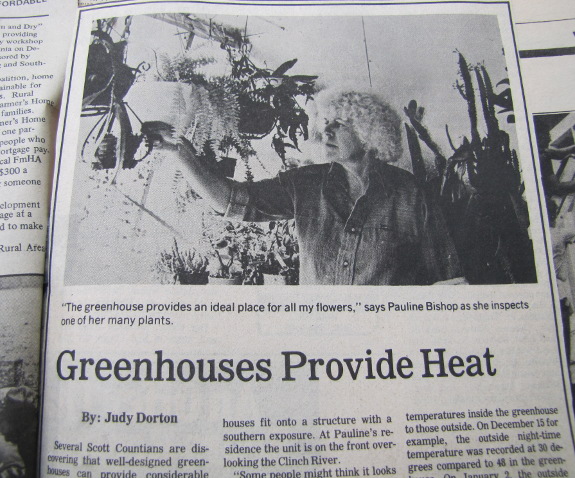
Heat retention in a greenhouse
 For the sun to be used as the main heat source in
a greenhouse, there must be some way of collecting and storing heat
during the day and releasing it at night. There has to be enough
storage available to absorb excess heat in the daytime so that the
temperature does not get too hot, as well as to store enough heat
that supplemental heat is not needed on a normal winter’s night.
For the sun to be used as the main heat source in
a greenhouse, there must be some way of collecting and storing heat
during the day and releasing it at night. There has to be enough
storage available to absorb excess heat in the daytime so that the
temperature does not get too hot, as well as to store enough heat
that supplemental heat is not needed on a normal winter’s night.
There are two common systems of heat storage: one using containers
of water, the other using some type of masonry. If you can scrounge
free water containers, water storage is cheaper. In the greenhouse
described here, the owner must find a source of heat storage.
Storage containers should be painted black, dark green, or dark blue
for maximum heat absorption, and must be placed where the winter
sunlight will hit them directly. Because of the corrosive nature of
water, metal drums should have a rust inhibitor added to the water
to prolong their lives.
It is a good idea to put storage containers
underneath the plant beds so that they keep the soil warm. A plant
bed can be a simple wooden box sitting on top of 55-gallon
water-filled drums.
Masonry storage can be: a concrete floor, or one
of brick, tiles or even dirt, sand, or gravel; or a stack of rocks,
bricks, etc. supporting growing containers. In any case, there
should be insulation underneath the masonry to prevent heat loss to
the ground. This insulation can be as simple as bricks stacked on an
old wood pallet, keeping them off the ground.
Did you enjoy these excerpts from Low-Cost Sunroom? If so, download the whole thing --- it's free today on Amazon! Thanks for reading.
| This post is part of our Low-Cost Sunroom lunchtime series.
Read all of the entries: |
Want more in-depth information? Browse through our books.
Or explore more posts by date or by subject.
About us: Anna Hess and Mark Hamilton spent over a decade living self-sufficiently in the mountains of Virginia before moving north to start over from scratch in the foothills of Ohio. They've experimented with permaculture, no-till gardening, trailersteading, home-based microbusinesses and much more, writing about their adventures in both blogs and books.
Want to be notified when new comments are posted on this page? Click on the RSS button after you add a comment to subscribe to the comment feed, or simply check the box beside "email replies to me" while writing your comment.
